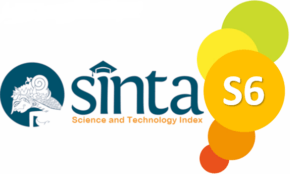Pengolahan Rambut Jagung Untuk Teh Herbal Dan Strategi Pemasarannya
DOI:
https://doi.org/10.31933/ejpp.v5i1.1234Keywords:
Corn silk, Herbal tea, Antioxidant activity, Agricultural waste, Economic developmentAbstract
Corn silk (Zea mays L.), commonly considered agricultural waste, contains bioactive compounds with potential health benefits, including flavonoids, phenols, and tannins. These compounds exhibit antioxidant properties that can help prevent degenerative diseases such as cardiovascular disorders, diabetes mellitus, and cancer. This community service program focuses on utilizing corn silk as a raw material for producing herbal tea with economic value and health benefits. The program employs participatory and collaborative approaches, involving local farmers to develop skills in production, marketing, and product quality assurance. The innovation supports sustainable health practices and contributes to local economic development by transforming agricultural waste into valuable products.
References
Bushman, J. L. (2002). Use of medicinal plants and natural products in health promotion. Journal of Ethnopharmacology, 81(3), 201-210.
Hasanudin, K., Hashim, P., & Mustafa, S. (2012). Corn silk (Stigma maydis) in healthcare: A phytochemical and pharmacological review. Molecules, 17(8), 9697-9715.
Nurraihana, M., Norhayati, N., & Zaiton, Z. (2018). Corn silk tea as a traditional remedy: Benefits and potential for health. Traditional Medicine Reviews, 5(2), 45-53.
Setiawan, H., & Pratiwi, D. R. (2018). The role of herbal tea in modern lifestyle: Opportunities and challenges. Journal of Herbal Studies, 12(4), 98-112.
Supriyanto, H., Rahmawati, L., & Widodo, S. (2014). Quality assessment of corn silk: Impacts of storage duration and conditions. Agricultural Research Bulletin, 24(6), 45-53.
Utami, S. R., & Handayani, L. (2017). Effects of drying methods on antioxidant properties in herbal plants. Food and Nutrition Research, 5(8), 120-126.
Wijayanti, D., Putri, R., & Santoso, D. (2016). Antioxidant properties of herbal tea made from corn silk. Journal of Food Science and Technology, 14(3), 205-215.
Downloads
Published
How to Cite
Issue
Section
License
Copyright (c) 2025 Leffy Hermalena, Herda Gusvita, Nita Yessirita, Bustari Badal, Rera Aga Salihat, Rera Agung Syukra, Inawaty Sidabalok, Henny Puspita Sari, Rina Febrinova

This work is licensed under a Creative Commons Attribution 4.0 International License.
Penulis yang mempublikasikan manuskripnya di jurnal ini menyetujui ketentuan berikut:
- Hak cipta pada setiap artikel adalah milik penulis.
- Penulis mengakui bahwa Ekasakti Jurnal Penelitian & Pegabdian (EJPP) berhak menjadi yang pertama menerbitkan dengan lisensi Creative Commons Attribution 4.0 International (Attribution 4.0 International (CC BY 4.0) .
- Penulis dapat mengirimkan artikel secara terpisah, mengatur distribusi non-eksklusif manuskrip yang telah diterbitkan dalam jurnal ini ke versi lain (misalnya, dikirim ke repositori institusi penulis, publikasi ke dalam buku, dll.), dengan mengakui bahwa manuskrip telah diterbitkan pertama kali di Ekasakti Jurnal Penelitian & Pegabdian (EJPP).

.png)














